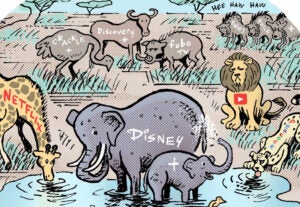 “Data-Driven Thinking” is written by members of the media community and contains fresh ideas on the digital revolution in media.
“Data-Driven Thinking” is written by members of the media community and contains fresh ideas on the digital revolution in media.
Today’s column is written by George Pappachen, board director at BIScience and adjunct professor at New York University’s Leonard N. Stern School of Business.
We are in the second decade since programmatic’s rise, a business that still operates soundly on mystery and magic. That’s because we have not answered fundamental questions: How did an ad get placed? Where on the site did it show up? Could anybody see it? How many parties does it take to transact a smart, programmatic campaign?
Everything was supposed to be better. By everything I mean precision and measurability – the very metrics that attest to digital’s superior standing among media – yet, that’s not how it feels.
It’s been said before but is worth repeating: Programmatic must operate in a more open, simplified and trustworthy manner, with transparency as modus operandi. Then the promised land will be within sight.
As it stands today, trust in advertising is at an all-time low, according to an authoritative report from eMarketer founder Geoff Ramsey. In fact, marketing and advertising is the survey’s least trusted of any industry. (Yes, lawyers were on the list.) About half as many people trust the advertising sector as they do social media platforms, which itself came in at a low bar of 3%. Even the government, in these divisive times, is trusted more, by 23%.
Within the industry, the ANA-K2 report and other public pronouncements indicate similarly historic levels of distrust.
With that as backdrop, we should all be rooting for programmatic to get more into the sun, albeit at the risk of being less mysterious. Transparency is necessary medicine, though it does not have to be a bitter pill. With it, a trusted and more rewarding marketplace could finally emerge.
There are many benefits of transparency for programmatic. Here are three:
Lower inflation and taxes
Sounds eerily like a political slogan, but transparency can be a win-win. Publishers keep more of the money (lower taxes, if you will) and advertisers get more “working” media for the bucks they spend (lower inflation).
This enlightening and absurd deconstruction of the costs involved in programmatic advertising illustrates the complexity and expense built into the practice: The ad tech tax could devour up to 55% of programmatic spend. It’s no wonder Google and Facebook absorb an inordinately high share – more than 80% – of digital advertising’s growth during the past five years. They’ve created a simpler, more efficient way of transacting, and at least advertisers know where their money is going.
Better data stewardship
It’s good for brands and publishers to know who exactly are representing them when it comes to reaching consumers with communications. Greater transparency allows for visibility into the chain of custody for the data that is used and collected in the course of programmatic transactions.
Also, how many hands should be in the mix for the delivery of incremental value during the placement of an ad? With transparency and available tools, such as mediator and impression chain data from media intelligence firms, brands can be better stewards of the goodwill they have in the minds and hearts of consumers.
Brand management
As the role of agencies continues to evolve, their specialist capabilities will serve brands well. Agencies are uniquely positioned to be the eyes and ears for brands in a complex digital media landscape. That said, the days of brands hiring their agencies and leaving investment decisions to them entirely are over. Both brands and their agencies want good placements. They want real and engaged audiences. The journey to that end has become too complex and costly and the pendulum has swung toward brands being more hands-on.
A confluence of factors is strongly urging the industry to become more transparent quickly. The global effects of Europe’s General Data Protection Regulation compel companies to be forthright to consumers about data. Marketers are demanding that material facets of their media and advertising operations are discussed with them. Even consumers are “woke” to the fact that their digital footprints are observed well beyond the site they visited or searched on.
With this in mind, I hope we take deliberate steps to embrace transparency so that the ad-supported digital medium not only survives, but thrives.
Follow BIScience (@AdClarityBI) and AdExchanger (@adexchanger).













